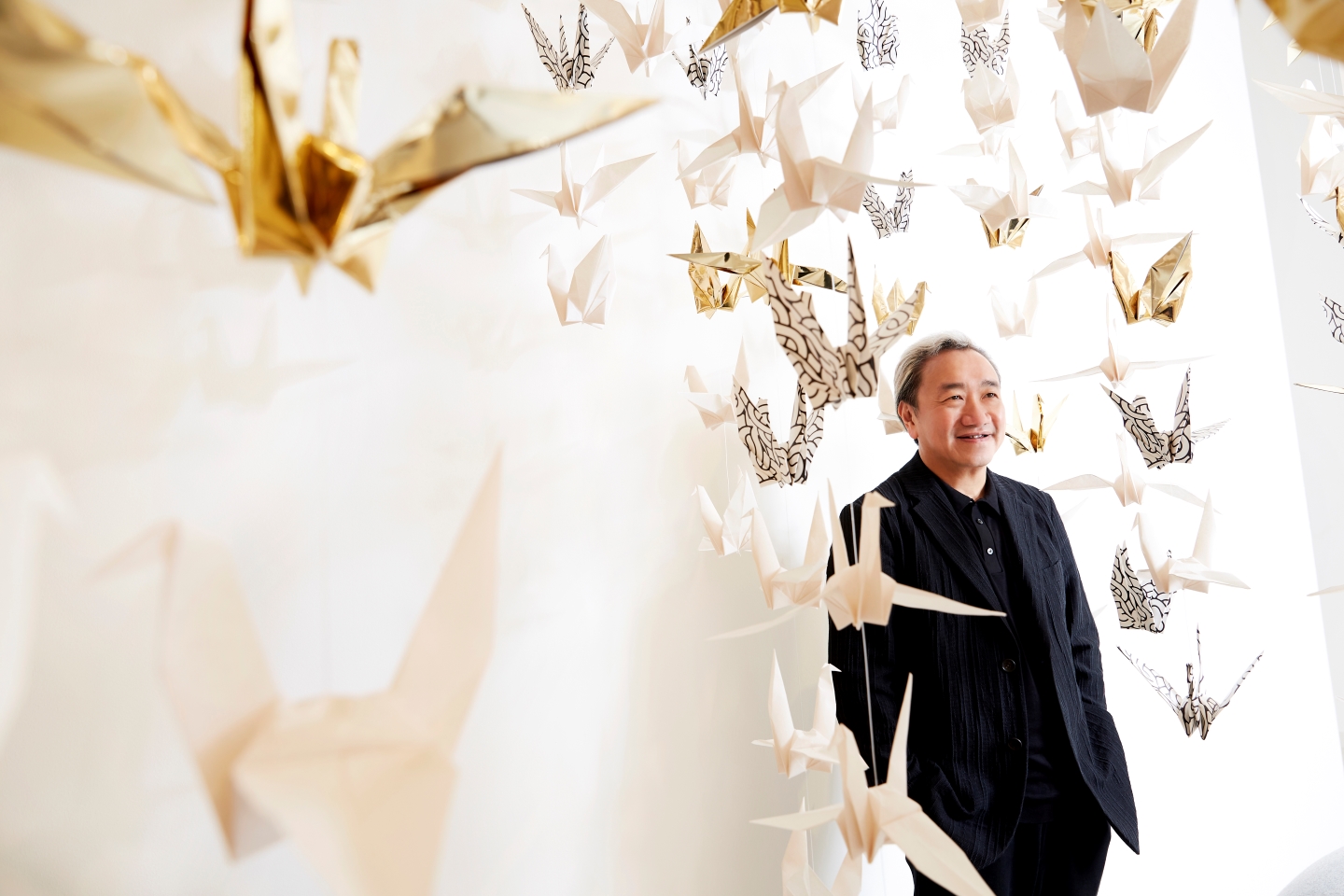
Beyond merchandise, Cheng and his team ensure several exciting pop-ups and collaborations are part of Seibu KL’s equation (Photo: Soophye)
Looking around at the shiny, new 265,000 sq ft retail space that encompasses Kuala Lumpur’s most luxurious department store so far, you would be hard-pressed to imagine that this was still very much a work in progress just two days earlier. Having officially opened for business last week, Seibu (pronounced “say-bu”) proudly brings the Japanese brand’s famous aesthetics, product curation and omotenashi — or hospitality — to the country.
Nestled in The Exchange TRX, a 17-acre lifestyle quarter that is part of the greater 70-acre business and financial district dubbed TRX, or Tun Razak Exchange, Seibu KL has a collective investment in excess of RM150 million. Spanning four levels and with a workforce of more than 1,000, shoppers may peruse desirables from no fewer than 700 luxury, contemporary and Japanese brands, a staggering hundred-plus of which are making their Malaysian debut.
I dreamed of a dream
For Seibu KL chairman Datuk Alfred Cheng, 59, it is the beautiful coming together of a long-held dream. “From Day One, I wanted this to be an international luxury department store, but with a lot of Japanese influences. I also wanted to introduce a new name to the market,” says the renowned retailer who was instrumental in expanding the Parkson department store footprint across the region in the 1990s before investing in Sogo KL in 2016. Cheng’s family also owns the Singapore-based LTC Group, whose business interests span property, retail, manufacturing and trading.
Gamely giving us a sneak preview ahead of Seibu’s official opening on Nov 29 at precisely 11.08am (no doubt for feng shui reasons), Cheng’s excitement is palpable as he shows us around, starting with the main entrance, which is illuminated with LED pillars and flanked by haute jeweller Fred and Montblanc. A Nizam Abdullah sculpture, subtly evoking the store’s logo in which two koi fish, the traditional Japanese symbol of beauty, prosperity and longevity, intertwine to form an “S” for Seibu, takes pride of place here as well.
Dodging delivery trollies and with our conversation incessantly interrupted by the sounds of hammering and drilling, Cheng points out the meticulously curated Shoe Salon, where new-to-market names such as Rupert Sanderson and Ancient Greek Sandals are displayed alongside iconic brands such as Manolo Blahnik and Sergio Rossi, before leading us into the gleaming, cavernous depachika (food hall), where foodies can drool over the selection of air-flown goodies from Toyosu Market or take a nibble at the latest outpost of the acclaimed Sushi Suzuki from Tokyo’s Ginza district.
A huge Japanophile, Cheng (sartorially underscoring the point by turning up fully dressed in Issey Miyake Men complete with hand-painted washi art Onitsuka Tiger sneakers from its covetable Nippon Made series — “I absolutely cannot get them wet as they’ll be ruined”) visits the country several times a year without fail, staying for as long as he possibly can each time. “I’ve been all over Japan but my favourite will always be Tokyo,” he says, adding that the Grand Hyatt in Roppongi Hills can count him as a loyal guest for the past 15 years. “I try to stay at least a week. There’s always something new to experience and a keen, distinct vibe in each of the different areas, from Shinjuku to Harajuku, and Ginza to Shibuya.”
seibu_1st_floor.jpg
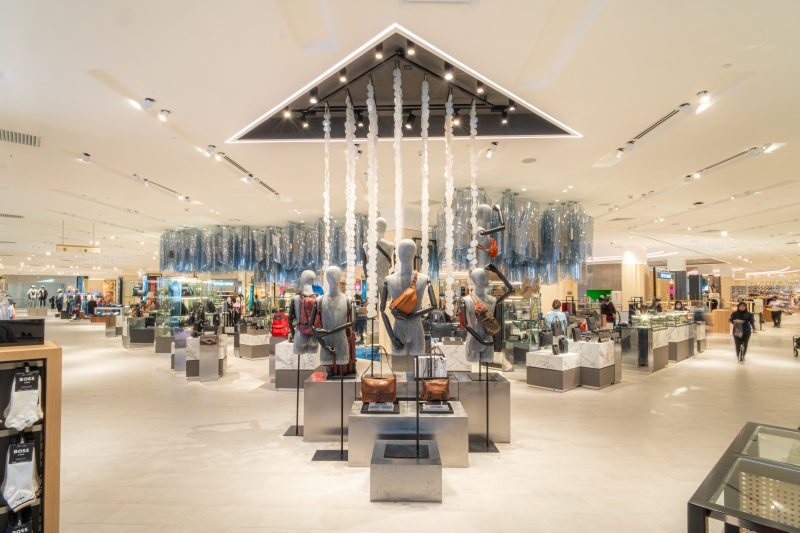
The Malaysian touch
As an industry veteran, Cheng acknowledges the landscape has changed drastically. Recent reports have shown how only top-tier luxury remains unassailable, impervious to fluctuations in demand or online competition. “As you can see, luxury continues to grow across all markets. So, I truly believe the luxury sector is the way forward for retail. Besides, this is something I am very, very passionate about. I love luxury — personally as well as professionally. It was also part of my ambition to build something the country has not yet seen or experienced, and Seibu has been seven years in the planning for me. I have wanted to do something of this calibre for so long and, yes, I believe Malaysia is now ready.”
Although Seibu is quintessentially Japanese, Cheng has taken great pains to ensure its first store in Malaysia is tailor-made to perfectly fit the local market. “We know Malaysia; we know the market,” he states. “We started with a few key criteria, chief of which was that I wanted luxury to be placed right up front … to set the tone. But luxury on its own can seem cold; so, we positioned cosmetics and skincare at the store’s centre to give [a welcoming] warmth. To me, Seibu is the [country’s] first luxury department store. I have no intention to build a second one — well, at least not for the next 10 years — because it takes a certain catchment, a certain income group and a certain location to command the sort of price points we offer in terms of consumer merchandise.”
The location at The Exchange TRX, of course, deserves all the hype. One of the most talked-about developments in recent years, it has been likened to other international master projects, such as Barangaroo on Sydney Harbour. “All the luxury brands, from LVMH to Kering, are here. Also, TRX was created, basically, out of a blank sheet of paper — unlike the city’s other two main successful malls, which were built in an existing area and difficult to create new infrastructure for. Here, getting in and out is very easy. So, in terms of ambition, for ourselves, for Seibu and for TRX, it was all very compatible.”
Cheng is, of course, spot on. Connectivity will prove to be a major boon as shoppers may choose to access TRX from a variety of primary arteries, namely Jalan Tun Razak, the SMART Tunnel, the Maju Expressway (MEX Highway) and even its connecting MRT station, which is KL’s largest.
seibu_1st_floor_2.jpg
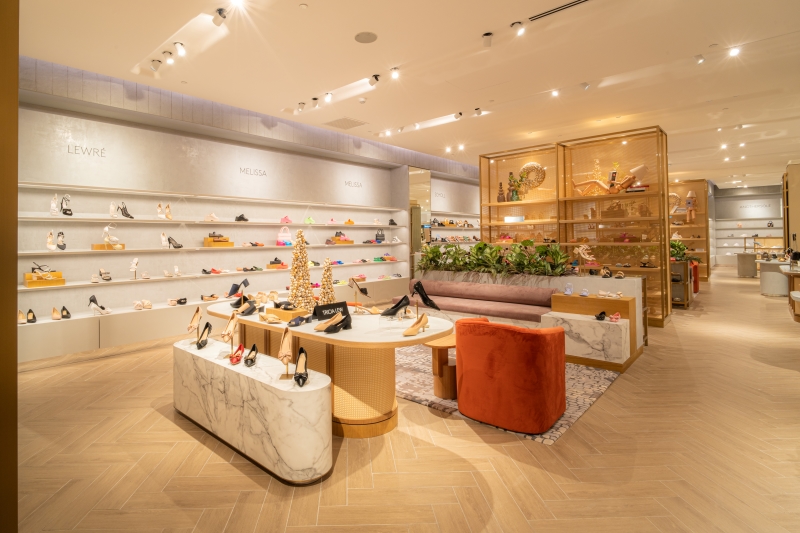
The power of choice
Fully aware that the biggest complaint of department stores over the past 15 to 20 years globally is how “the young don’t want to come in”, Cheng has made it his mission to ensure a retail mix so exciting that Seibu KL will be a social as well as retail magnet for what is now the two most powerful consumer demographics — Millennials and Gen Z.
With a daughter, 28, and son, 24, Cheng says he is well aware of the fact. “Matthew would be buying the $2,000 shirt while I would be getting the $200 one. But being very fashionable, he gave input on what’s happening in terms of contemporary fashion. Amanda, who works for a top Japanese skincare brand, also shared her beauty knowledge with me. And, of course, I must mention my wife Rita, who has been instrumental in it all. This has always been my vision … to create a platform where both young and old, an entire family, would want to come — not just to shop but to eat and spend time together. For example, if Matty and I have a day out at Seibu together, he would look at designer sneakers and cool streetwear, as would I, unashamedly. We would then look for a place to sit down, eat and talk. There are so many things to do together. This is important as luxury is also about creating memories.”
Beyond merchandise, Cheng and his team ensure several exciting pop-ups and collaborations are part of Seibu KL’s equation. Customers who venture near the Shoe Salon cannot fail to notice a colossal tree entirely festooned with white-and-gold orizuru, paper cranes synonymous with the Japanese art of origami. Those with a keen eye would also pick out a special few in a bold black-and-white motif. “Those are [designed] by Hiroko Takahashi. If you aren’t familiar with her name, she has worked with Fendi and Adidas, and designed uniforms for the Tokyo Olympics. We commissioned her to design our packaging and staff uniforms, and also a small fashion collection.
“Besides Hiroko, we are also working with various brands for creative pop-ups. This is all in line with our vision of Seibu KL being a place where people come not just to shop, but to socialise, get inspired and make memories. The crane tree is what I term a ‘store spotlight’. We will have many talking points within the store, each designed to catch your eye, be a good spot to take pictures and so on. Like I said, we want this to be a place for making memories.”
Shopping can be tiring work. So, those who need a caffeine jolt will be relieved to know they need not have to walk up and down in search of a cup or be relegated to a dark corner somewhere. At Seibu KL, the good folks behind Kenny Hills Bakers have set up a small café called The Coffee Lounge, specialising in brewed coffee right among the coolest clothes on Level One; and fans of Mori Kohi’s famous tendon (tempura rice bowls) can now tuck into it on Level Two, nestled amid its signature verdant touch.
“We also have a branch of Sun Fresh, which you might know. They are very well known for their gift baskets using premium fruits, such as lovely strawberries and Shine Muscat grapes. So, you now have another option for gifting the next time you visit somebody’s home. Wonderful peaches make a nice change from the usual whatnot, right?”
Given Seibu KL’s focus on luxury, Cheng also shares how each visit is designed to be as fluid, authentic and seamless as can be. “We have Japanese hairstylists to attend to you, with special chairs where you can get your hair done while having a mani-pedi complete with Pol Roger champagne ordered from our in-store champagne bar. There is also a special lounge where items may be brought to you [to peruse] in comfort and privacy. Your time at Seibu must be experiential,” he emphasises.
mori_kohi_seibu.jpg
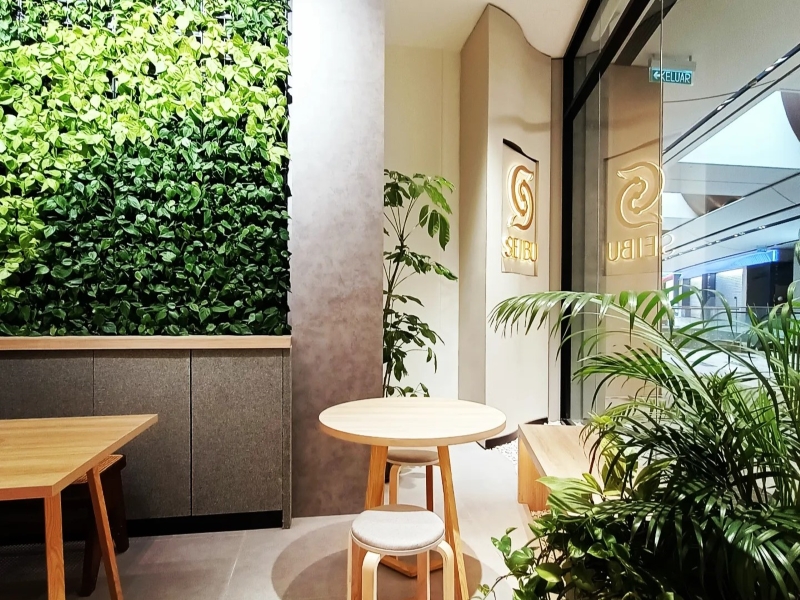
Theory of evolution
On the evolution of Malaysian retail, Cheng acknowledges that there have been marked improvements since the 1980s but is frank about the fact that most operators still have not been able to break through to the next level in terms of service or putting together an environment with blanket appeal. “In a way, everything is about content, right?” he posits. “Whether it’s running a TV station, restaurant or retail store, it’s always about content. You must put together brands people enjoy buying while ensuring the overall standard of service and experience. Otherwise, they are better off shopping online. You will also find a lot of complementary services here at Seibu, from engraving and wrapping to personal shopping and more. You will see many department store ‘firsts’. This is part and parcel of our vision of bringing people in … and bringing them together.”
Given his impressive résumé, it may come as a surprise that Cheng never intended to work in retail. “Except for a short period of time when I was a child. It was my primary school dream to, one day, own and run a watch shop. A little watch shop,” he laughs. “But, of course, things changed as I grew up. In fact, I was all set to work in banking, doing mergers, acquisitions and all that. You can see my background was originally skewed towards finance.”
It was only after Cheng’s father, the late Cheng Theng Kee, bought into what used to be Emporium Holdings, transforming the department store into what would later become Parkson, that the well-laid path of the aspiring Simex Nikkei trader suddenly — and abruptly — changed course. “I was going to trade futures as my first real job when my father said, ‘Oh, we just got into retail. And the consumer industry is the future. Also, none of us know how to run a retail business. So, why don’t you go in?’ To be honest, I wasn’t very interested at all. It was only after he told me there were plans to transform it into an American department store, with a lot of fashion shows and a lot of beautiful models, that I changed my mind,” Cheng laughs. “Hey, I was in my early 20s!”
_s1a4881a_1.jpg
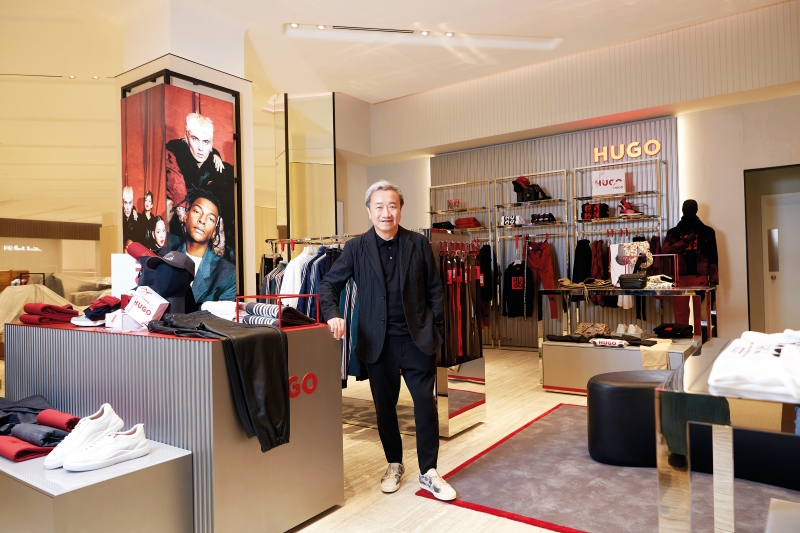
Do what you love
Dutifully coming on board to learn the business, Cheng naively thought all he had to do was put in a few good years of hard graft, after which he could happily return to finance. He says: “I quickly found out that retail was less about meeting models and more about picking up rubbish, folding clothes and adjusting mannequins. But it made me fall in love with marketing. I enjoyed creating new campaigns and organising events. It also helps that I love design and beautiful things by nature. But, above all, I love retail’s ability to give you immediate feedback versus other industries, like manufacturing. What works — or doesn’t — is immediate here and I like that.”
As for what advice he would give eager hopefuls on succeeding in the famously fast-paced sector, Cheng fairly states: “All industries are essentially the same. So, find something you are truly passionate about. There’s really no substitute for it. Once you establish that, you would naturally work hard, learning as much as you can. And the more you learn, the more you will enjoy what you do. But be quick to adapt to change and always look for ways to innovate, improve and upgrade your business … even if it is just a different but better way of doing things to serve your customers.”
Given his demanding role and multi-faceted scope of work, travel, as expected, is Cheng’s preferred way of keeping abreast of trends and staying inspired. “I’m in a couple of networks that keep me up-to-date with the latest information. I also read a lot.”
Does he ever get stuck in the quagmire where work and play messily merge into one? “Like I said, retail is my work and my passion. So, my holidays invariably revolve around shopping destinations,” Cheng grins. “I’m not into scenery or safaris. That’s for my kids. I might do that just the one time. I have always been a big-city person and I really do love looking at what and how others are doing in the major fashion capitals — and learning from them. So, it helps that I truly and honestly love shopping. It really makes me happy.”
Retail therapy could not be a better way to describe it.
This article first appeared on Dec 4, 2023 in The Edge Malaysia.


